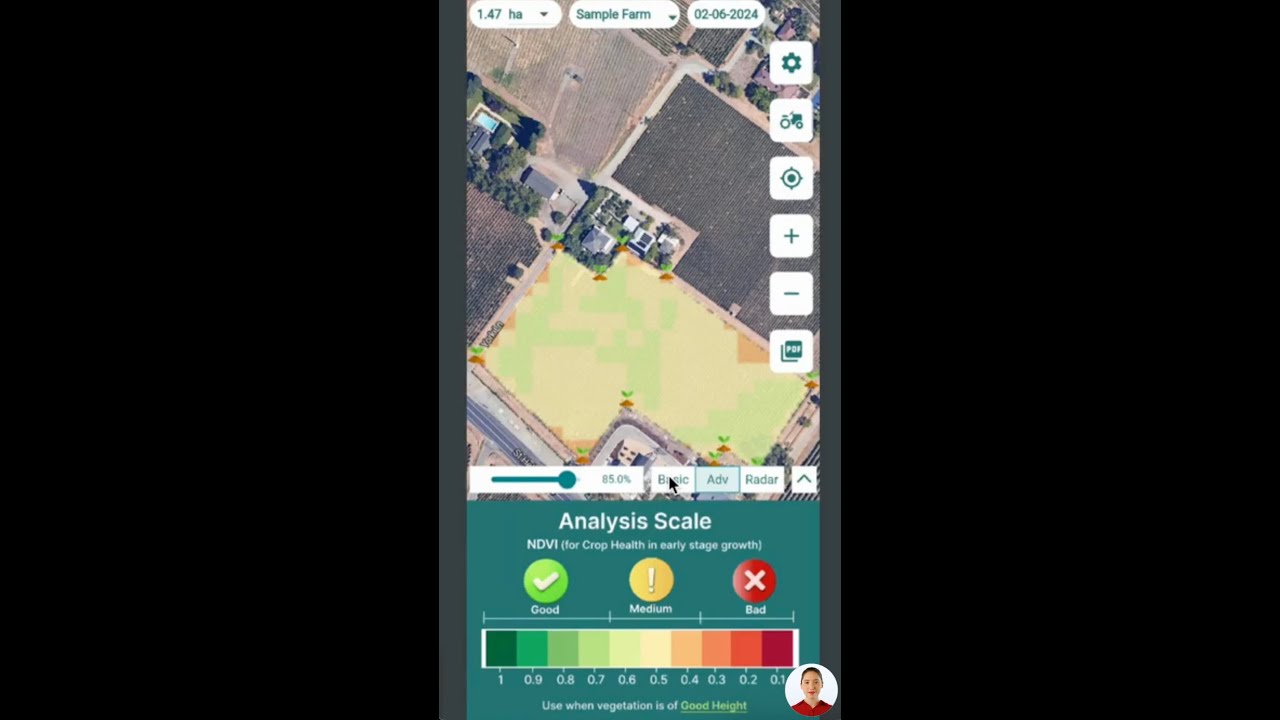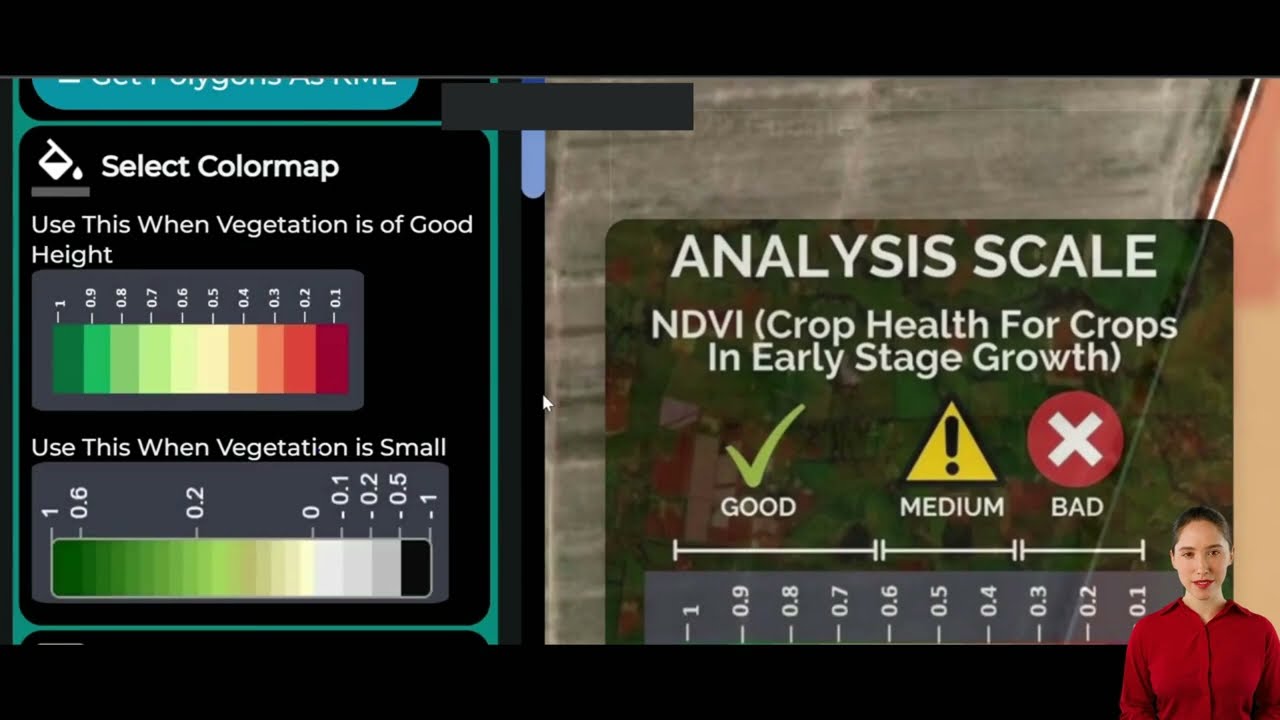Table of Contents
- Summary: Understanding Zinc Deficiency in Agriculture
- Did You Know?
- Zinc’s Role in Plant Development: Essential Functions and Importance
- Causes of Zinc Deficiency in Crops and Soils
- Symptoms of Zinc Deficiency in Plants and Crops
- Diagnosis and Soil Testing for Zinc Availability
- 7 Smart Ways to Boost Plant Growth and Prevent Zinc Deficiency
- Zinc Trivia Fact
- Zinc Deficiency Symptoms and Management Table
- Leveraging Farmonaut for Data-Driven Zinc Deficiency Management
- Frequently Asked Questions on Zinc Deficiency in Plants
- Conclusion
Deficiency of Zinc in Plants: 7 Ways to Boost Growth
Zinc deficiency in plants
is one of the most widespread micronutrient deficiencies affecting agricultural production globally. Its impact stretches from diminished crop yields and stunted growth to poor nutrient quality and financial losses for farmers. In this comprehensive post, we dive deep into the causes of zinc deficiency, outline key symptoms, discuss optimal soil pH, environmental and management factors, as well as offer actionable solutions and preventive measures that help ensure healthy, productive crops and sustainable agriculture.
Meta Description: Deficiency of zinc in plants can lead to stunted growth and reduced yields. Learn symptoms, causes, optimal pH, and management for sustainable crop production.
“Zinc deficiency can reduce crop yields by up to 40%, severely impacting food production and farmer income worldwide.”
Zinc’s Role in Plant Development: Essential Functions and Importance
Zinc (Zn) is an essential micronutrient crucial to the growth, development, and productivity of all plants. As a metal ion, it acts as a cofactor and structural component for hundreds of enzymes in plants, supporting a wide spectrum of physiological processes:
- Enzyme Activation: Zinc is involved in the activation of enzymes responsible for carbohydrate metabolism, protein synthesis, and nucleic acid metabolism. This means adequate Zn is fundamental for basic cell and tissue growth.
- Growth Regulation: It influences the synthesis of vital plant hormones, particularly auxins, regulating both root and shoot elongation, internode length, and overall plant structure.
- Formation of Chlorophyll: Zinc is integral to the formation of chlorophyll, directly affecting photosynthesis efficiency and crop energy capture.
- Stress Resistance: Adequate Zn levels enhance resistance to environmental stresses (drought, temperature, salinity) and diseases by supporting antioxidant enzyme action and membrane integrity.
Given zinc’s pivotal biological roles, a deficiency in soils often leads to significant yield losses if not properly managed. This makes understanding zinc deficiency in agriculture a central concern for sustainable food production and farm profitability.
Did you know? Using
advanced satellite-based crop health monitoring
like Farmonaut provides near real-time soil and plant growth data. By analyzing vegetation health indices and soil moisture, farmers can detect early decline in plant vigor potentially linked to zinc deficiency, facilitating timely interventions for optimal crop productivity.



How to Interpret Satellite Data for Agriculture | Farmonaut Mobile Apps
Causes of Zinc Deficiency in Crops and Soils
The deficiency of zinc in plants, as well as crops, originates from a complex interplay of soil, environmental, and agricultural management factors. Below, we break down the main causes and their mechanisms:
- High Soil pH (Alkaline Soils): Soils with a pH above 7.0 tend to form insoluble zinc compounds such as Zn(OH)2 and ZnCO3 (source: [Teagasc]). This renders zinc less available for plant uptake. Alkaline and overlimed soils in regions like North Carolina, Punjab, and Australia are especially prone to this issue.
- Low Organic Matter Content: Insufficient organic matter reduces zinc chelation and mobilization, decreasing bioavailability in soil. Organic-poor sandy areas are high-risk zones for deficiencies.
- Soil Texture & CEC: Sandy soils with low cation exchange capacity (CEC) allow more leaching of zinc ions, further reducing their availability, particularly after heavy rainfall or excessive irrigation.
- Excessive Phosphorus Application: High soil phosphorus interferes and competes for root Zn uptake sites, decreasing absorption—especially when P-to-Zn ratios are imbalanced.
- Cool, Wet Conditions: Cold temperatures and excessive soil moisture reduce microbial activity, slowing down Zn release from organic and mineral fractions, leading to deficiency symptoms in susceptible crops.
- Continuous Cropping & Overliming: Repeatedly growing crops without zinc fertilization (especially in maize, wheat, rice systems) and excessive use of lime can rapidly deplete soil Zn reserves (source: Agrownet).
Environmental and Agricultural Practices Affecting Zinc Uptake in Soil
- High irrigation or rainfall increases leaching risk in sandy, low-CEC soils.
- Overuse of high-phosphorus fertilizers can suppress Zn availability.
- Poor crop rotation practices drain micronutrient reserves over time.
Summary Table: Key Factors Influencing Zinc Deficiency
- Alkaline Soil pH: pH > 7.0 forms insoluble compounds
- Low Organic Matter: Less chelation and mobilization of Zn
- Sandy Texture: High leaching, low CEC
- Excessive Phosphorus: Antagonistic effect, inhibits Zn uptake
- Environmental Conditions: Wet, cool slows Zn mineralization
- Agricultural Practices: Overliming and continuous cropping
Why Is Soil Testing Crucial?
Soil and tissue testing remain the gold standard for diagnosis, helping farmers target zinc fertilization practices only where and when it’s truly needed, minimizing waste and ensuring balanced nutrients.
To automate zinc status monitoring on your farm, consider integrating data-driven detection with our Fleet and Resource Management solution. This enables scheduling of nutritional interventions based on precise geospatial field insights.
Explore Farmonaut’s Advanced Crop Monitoring & Yield Prediction
Symptoms of Zinc Deficiency in Plants and Crops
Early identification of symptoms of zinc deficiency in crops is vital to prevent long-term crop damage, reduce yield loss and ensure sustainable agriculture. Zinc deficiency most commonly affects:
- Young Leaves (Primarily): Because zinc is relatively immobile in plants, new growth typically displays the first signs, especially under rapid vegetative development.
5 Key Symptoms to Recognize
- Chlorosis: Interveinal yellowing seen on young leaves; in maize, manifests as interveinal striping (source: Agricultural Western Australia).
- Stunted, Bushy Growth: Reduced plant height with shortened internodes, contributing to a bushy appearance.
- Small, Misshapen Leaves (Leaf Deformities): Young leaves may appear narrow, have wavy or distorted margins, and—if severe—develop necrotic spots.
- Impaired Root Development: Underdeveloped root system, lowering water/nutrient absorption and plant anchorage.
- Delayed Flowering or Maturity: Crops exhibit delayed reproductive development, impacting harvest scheduling and market timing.
Unlocking Soil Organic Carbon: The Secret to Sustainable Farming with Farmonaut
Visual Guide: What Are the Early Signs?
- Maize/Corn: Interveinal chlorosis, “White Bud” in severe cases.
- Wheat: Bleached bands on newly-developed leaves.
- Beans, Fruits: Little leaf syndrome, rosetting, reduced fruit set.
To ensure earlier deficiency detection and consistent monitoring, we recommend using Farmonaut’s Crop Plantation, Forestry & Advisory solutions. These tools harness satellite and AI technologies to flag sudden drops in vegetation health, which may signal micronutrient problems before visual symptoms escalate.
Symptom Details Table: Fast Identification
| Plant Symptom | Estimated Severity | Crop Yield Loss (%) | Soil pH Range Observed | Recommended Management Practice |
|---|---|---|---|---|
| Stunted growth and bushy appearance | High | 20-35% | 7.0 – 8.2 | Apply soil zinc fertilizers & correct soil pH |
| Interveinal chlorosis (yellow striping) | Medium-High | 15-30% | 6.5 – 8.0 | Targeted foliar Zn application |
| Leaf necrosis (dead spots/margins) | Medium | 10-20% | 6.7 – 8.0 | Enhance organic matter, balanced nutrients |
| Small, misshapen/rolled leaves | Medium | 8-15% | 7.0 – 8.2 | Soil + foliar zinc in early growth stage |
| Delayed flowering/maturity | Low-Medium | 5-15% | 6.5 – 7.8 | Correct Zn, manage P application |
| Impaired root system | Medium | 10-25% | 7.0 – 8.5 | Maintain optimal pH, increase organic matter |
Diagnosis and Soil Testing for Zinc Availability
Accurate diagnosis is essential for zinc deficiency management in the field. The gold standard methodology involves visual inspection combined with soil and tissue testing:
- Visual Identification: Spotting characteristic symptoms as outlined previously. However, visual symptoms may overlap with iron or manganese deficiencies; confirm via analytical testing.
- Soil Analysis: Reliable labs measure available zinc levels (DTPA-extractable Zn); optimal range for most crops: 0.5 to 2.0 ppm (as per North Carolina data).
- Tissue/Leaf Analysis: Ideally conducted at early-mid vegetative stage. Critical lower limit for leaf tissue: 15–30 mg Zn/kg dry weight (varies by crop).
- Monitor pH, Organic Content, and CEC: These factors often dictate Zn status. Incorporating organic matter can significantly enhance zinc availability in deficient soils.
Pro-Tip: Regular testing, ideally before each major cropping season, helps preventing micronutrient deficiencies in agriculture while promoting long-term soil health and balanced nutrition.
If you manage or consult for multiple fields, Farmonaut’s API and Developer Docs enable direct access to NDVI/time-series maps, empowering automatic alerts for crop stress and improving integrated field diagnostics at scale.
Farmonaut’s Web App Tutorial: Interpreting Satellite Data for Smart Nutrient Management
7 Smart Ways to Boost Plant Growth and Prevent Zinc Deficiency
Plant growth and zinc status are intrinsically connected. Here are 7 sustainable strategies to prevent and manage zinc deficiency in soil for robust crop development:
-
Soil Zinc Fertilization Practices:
- Broadcast/Application of Zinc Sulfate or Oxide (mainly ZnSO4) at 10-25 kg/ha based on soil/tissue testing results corrects moderate-severe deficiencies in most cereals, cotton, oilseeds, and legumes.
- Zinc chelates (e.g., Zn-EDTA) may be used for higher efficiency in high-pH/alkaline soils due to their stability.
- Band placement near root zone increases uptake efficiency, especially in sandy or high P soils.
-
Foliar Sprays for Immediate Correction:
- Foliar application of zinc sulfate (0.5% solution) at early vegetative stage provides a rapid remedy for foliage symptoms, especially when root uptake is impaired by environmental factors.
- Multiple low-dose sprays are preferable over a single high-concentration spray to avoid leaf burn.
-
Optimize Soil pH for Zinc Availability:
- Maintain soil pH between 5.5 and 7.0—outside this optimal range, zinc forms insoluble compounds and becomes unavailable for plant roots. Avoid overliming that pushes pH above 7.0.
- In regions like North Carolina or the Indo-Gangetic plains, periodic pH monitoring plus judicious liming is recommended.
-
Enhance Organic Matter and Zinc Availability:
- Incorporate compost, farmyard manure, or crop residues to soils. Organic matter helps in chelating and mobilizing zinc, buffers sudden nutrient fluctuations, and stimulates microbial activity that releases Zn from insoluble forms.
- Follow the principle “Feed the soil to feed the crop” to build long-term resilience against micronutrient deficiencies.
-
Balanced Fertilization & Nutrient Management:
- Apply phosphorus judiciously: Monitor soil P levels and never exceed crop demand, as excessive P can suppress zinc uptake especially at ratios exceeding 15:1 (P:Zn).
- Integrate Zn with macro-nutrient fertilization: Use customized blends when possible to minimize antagonistic nutrient effects.
-
Crop Rotation and Break Crops:
- Implement diverse crop rotation plans (including legumes, deep-rooted crops) to prevent continuous depletion and enhance nutrient cycling in soil.
- Rotational systems increase zinc use efficiency compared to monoculture.
-
Regular Testing and Advanced Monitoring:
- Conduct yearly soil and tissue tests before major planting seasons, targeting prevention instead of only responding to visible symptoms.
- Leverage digital platforms—such as Farmonaut’s real-time crop and soil diagnostic services—for continuous, large-scale monitoring and evidence-based management.
“Optimal soil pH for zinc uptake in plants is 5.5–7.0; outside this range, deficiency symptoms increase significantly.”
Zinc Deficiency Symptoms and Management Table
| Plant Symptom | Estimated Severity | Associated Crop Yield Loss (%) | Typical Soil pH Range Observed | Recommended Management Practice |
|---|---|---|---|---|
| Stunted, bushy plants | High | 20-35% | 7.0 – 8.2 (alkaline) | Soil zinc fertilization, adjust pH, add organic matter |
| Interveinal chlorosis | Medium-High | 15-30% | 6.5 – 8.0 | Foliar zinc spray, monitor P levels |
| Leaf necrosis/dead margins | Medium | 10-20% | 6.7 – 8.0 | Increase organic content & balance NPK |
| Little leaf, small leaves | Medium | 8-15% | 6.9 – 8.0 | Foliar and soil Zn together, crop rotation |
| Delayed flower/fruit set | Low-Medium | 5-15% | 6.5 – 7.8 | Adjust soil Zn, review P applications |
| Poor root development | Medium | 10-25% | 7.0 – 8.5 | Apply compost, maintain optimal pH |
Leveraging Farmonaut for Data-Driven Zinc Deficiency Management
In the face of prevalent zinc deficiency in plants and the complexity of nutrient management, precision technologies are transforming field diagnostics and response at scale.
At Farmonaut, our mission is to make precision agriculture accessible and affordable for farmers globally. We offer a comprehensive satellite-based farm management platform—available on web, Android, and iOS—as well as API integration for businesses and institutions.
- Satellite Crop Health Monitoring: Detects subtle, early-stage plant stress before symptoms of zinc deficiency in crops become visible—empowering proactive intervention.
- Soil Moisture and Field Conditions: Monitors and maps soil moisture levels, helping users identify zones prone to leaching and low nutrient availability.
- AI-Based Advisory (Jeevn): Delivers crop-specific fertilization practices, including optimized zinc treatment timing and rate suggestions.
-
Blockchain Traceability: Provenance tracking for agrifood products; ensuring zinc-fortified outputs can legally and transparently be marketed as such.
Explore Farmonaut’s Product Traceability Solutions -
Carbon Footprinting: Quantifies the environmental impact of nutrient inputs and corrections, supporting sustainability and reporting.
See Farmonaut’s Carbon Footprinting Platform -
Integrated Resource & Fleet Management Tools: Schedules, tracks, and analyzes the timely delivery of micronutrient (zinc) treatments across multiple farms.
Read About Farmonaut’s Fleet Management Features
Our innovative satellite-based farm monitoring for crop loans and insurance also empowers financial decision-makers to validate claims, providing a unique ecosystem benefit across the agricultural value chain.
Frequently Asked Questions on Zinc Deficiency in Plants
What is the main cause of zinc deficiency in plants?
The most common cause is high soil pH (alkaline conditions), which makes zinc less available for uptake. Low organic matter, sandy soil with low CEC, and excessive phosphorus fertilization are also key contributors.
Which are the best indicators and symptoms of zinc deficiency in crops?
Look for interveinal chlorosis (yellowing between veins) on young leaves, stunted or bushy growth, small/misshapen leaves with wavy margins, delayed maturity, and poor root formation.
How can I prevent zinc deficiency in my fields?
- Regularly test soil zinc levels and maintain pH in the optimal 5.5–7.0 range.
- Incorporate organic matter (compost, manure) to enhance zinc chelation and availability.
- Apply zinc fertilizer (soil and/or foliar) based on test recommendations and crop stage.
- Avoid over-applying phosphorus fertilizers.
- Practice diverse crop rotations to reduce continuous soil depletion.
What is the optimal soil pH for zinc availability?
Ideally 5.5–7.0. Outside this range—especially above pH 7—zinc quickly becomes unavailable due to formation of insoluble compounds, increasing risk of deficiency symptoms.
Can Farmonaut help monitor my farm’s soil and crop zinc status?
Absolutely. Farmonaut empowers data-driven field management, allowing you to monitor vegetation health (which can signal micronutrient stress), assess soil moisture, get AI-driven recommendations for zinc application timing, and streamline resource management—thereby reducing the time to respond to deficiency stress and maximizing yields.
Is it possible to over-apply zinc? What are the risks?
Yes, unnecessary or excessive zinc fertilization can cause toxicity, antagonize uptake of other micronutrients (like iron and copper), and pose environmental risks. Always base application rates on tested soil and tissue Zn levels.
Conclusion
Deficiency of zinc in plants is a prevalent challenge affecting crop yields, quality, and farm profitability globally. Understanding key causes (e.g., high pH, low organic matter), recognizing symptoms of zinc deficiency in crops, and using zinc fertilization practices tailored to soil testing results can dramatically reduce losses and ensure sustainable, productive agriculture. Preventing micronutrient deficiencies means more than just keeping crops green—it guarantees food security, farmer incomes, and resilience under changing climate and environmental conditions.
By integrating advanced tools like Farmonaut—which combines satellite monitoring, AI advisories, and blockchain assurance—farmers, agronomists, and agro-businesses can transform how they manage fields, reduce risks, and produce healthier, higher-yielding crops for a growing world.
Take action today: Regularly test, amend, rotate, and leverage digital decision support to maintain optimal zinc and nutrient status for every crop, every season.



















